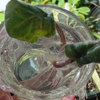Cyclamen mite question.
nmushka (7; Virginia)
12 years ago
Featured Answer
Sort by:Oldest
Comments (37)
irina_co
12 years agonmushka (7; Virginia)
12 years agoRelated Professionals
New Bedford Landscape Architects & Landscape Designers · Folsom Landscape Architects & Landscape Designers · Towson Landscape Architects & Landscape Designers · Newcastle Landscape Architects & Landscape Designers · Paradise Landscape Architects & Landscape Designers · Aberdeen Landscape Contractors · Arden-Arcade Landscape Contractors · Bedford Landscape Contractors · Corona Landscape Contractors · Fort Myers Landscape Contractors · Indio Landscape Contractors · Post Falls Landscape Contractors · Wareham Landscape Contractors · East Norriton Landscape Contractors · San Pablo Landscape Contractorsirina_co
12 years agonmushka (7; Virginia)
12 years agoirina_co
12 years agonmushka (7; Virginia)
12 years agonmushka (7; Virginia)
12 years agoe36yellowm3
12 years agonmushka (7; Virginia)
12 years agoGrowHappy
12 years agonmushka (7; Virginia)
12 years agoirina_co
12 years agofred_hill
12 years agoirina_co
12 years agonmushka (7; Virginia)
12 years agoitsdeb
12 years agonmushka (7; Virginia)
12 years agoJoeBloggs
12 years agoirina_co
12 years agopizzuti
12 years agoirina_co
12 years agosonority
12 years agonmushka (7; Virginia)
12 years agoirina_co
12 years agosonority
12 years agoirina_co
12 years agosonority
12 years agoCjer
12 years agoirina_co
12 years agoCjer
12 years agoirina_co
12 years agoCjer
12 years agoirina_co
12 years agoirina_co
12 years agoocelaris
12 years agoirina_co
12 years ago
Related Stories

HEALTHY HOMEWhat You Need to Know About Dust and How to Fight It
Breathe easier with these 10 tips for busting mites, dander and other microscopic undesirables
Full Story
HEALTHY HOMEHow to Keep Water Vapor From Ruining Your House and Your Health
We help you find out when it’s happening, what it means and how to fix it
Full Story
BASEMENTSDesign Workshop: Is It Time to Let Basements Become Extinct?
Costly and often unnecessary, basements may become obsolete — if they aren’t already. Here are responses to every reason to keep them around
Full Story
DECORATING GUIDESDecorating 101: Do It Yourself or Hire a Pro?
Learn the advantages and disadvantages of decorating alone and bringing in skilled help
Full Story
EVENTSOn Show: Weird, Wondrous Science Meets Design
Houses grown, not built. Power-generating soil. And snail poop that ... well, see for yourself in our coverage of a new Rotterdam exhibit
Full Story
HOUSEKEEPINGHow to Clean and Care for Your Mattress
See what the experts recommend to protect your mattress from dust, moisture and stains
Full Story
FEEL-GOOD HOMEThe Pros and Cons of Making Your Bed Every Day
Houzz readers around the world share their preferences, while sleep and housekeeping experts weigh in with advice
Full Story
FARM YOUR YARDHello, Honey: Beekeeping Anywhere for Fun, Food and Good Deeds
We need pollinators, and they increasingly need us too. Here, why and how to be a bee friend
Full Story
REMODELING GUIDESLinoleum, the All-Purpose Flooring Wonder
Dashing in a rainbow of colors, able to be cleaned with ease and courteous to budgets everywhere, linoleum is a super choice for floors
Full Story
HOUSEPLANTSPlay Up Some Fiddleleaf Figs for a Lively Indoor Tune
Strike a dramatic chord in a minimalist scene or a country note in a rustic setting — fiddleleaf fig plants harmonize with any style
Full StorySponsored
Zanesville's Most Skilled & Knowledgeable Home Improvement Specialists
More Discussions








ocelaris